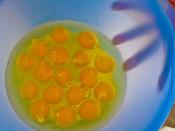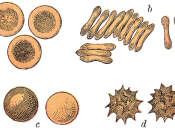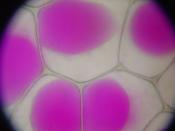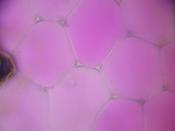Introduction Water plays a vital role in biological systems. Some species are able to survive in diverse environment such as fishes in salt water, Cactus plants in dry land and mammalian cells in aqueous surrounding because of the specialized underlying structures of these life-forms. In order for us to appreciate these special adaptation, we first need to know how a typical plant or an animal cell organelle behaves in different water and solute concentrations. In this lab, we will determine the effects of hypertonic, isotonic and hypotonic solutions on plant and animal cells. In general when an animals cell's placed in hypertonic solution it shrivels; a plant cell on the other hand undergoes plasmolysis. When an animal cell's placed in hypotonic solution, it begins to swell and then finally lyse; a plant cell placed in this type of solution however, is said to be turgid. In isotonic solution, the animal cell stays the same (normal) whereas the plant cell becomes flaccid.
In this lab, we started out with observing the effects of 3 different sugar solutions on Rhoeo discolor leaves. Then we observed rabbit blood cells placed in hypertonic, hypotonic and isotonic solutions. And finally, we observed some of the organelles, particularly the nucleus' of chicken cells as they were placed in detergent and water. Our results reported below show, when plant cells were placed in 0.2M, 0.3M, and 0.4M, and observed after 1 hour, the cells in high molar (0.4) solution plasmolyzed, and in low molar (0.2) solution looked normal. The rabbit cells shrunk when they were placed in hypertonic solution, and they appeared to be larger in size when placed in hypotonic solution. The chicken cells placed in detergent and also in water, appeared to have a reduction in the organelles.
Materials and Methods The materials and methods for this lab are described on pages 25 "" 27.
Experiment to determine whether plasmolysis is reversible Our control for this experiment was 2 pieces of Rhoeo discolor leaves placed in 0.4M sugar solution, one for 15 min. and the other for an hour and observed both under the microscope. We also had 2 experimental pieces of leaves placed in the same sugar solution for the same amount of time. Then we placed the experimental Rhoeo discolor leaves in water for about 8 minutes (first one after 15 min treatment of the sugar solution and second after 1 hr treatment of the sugar solution) and observed the results.
Experiment to determine if erthrocytes swell and burst when placed in hypotonic NaCl.
Prepare 2 slides of rabbit blood (1-2 drops) for which one would be the control for this experiment, and for the other, put a drop of hypotonic saline (NaCl) and observe both under the microscope.





